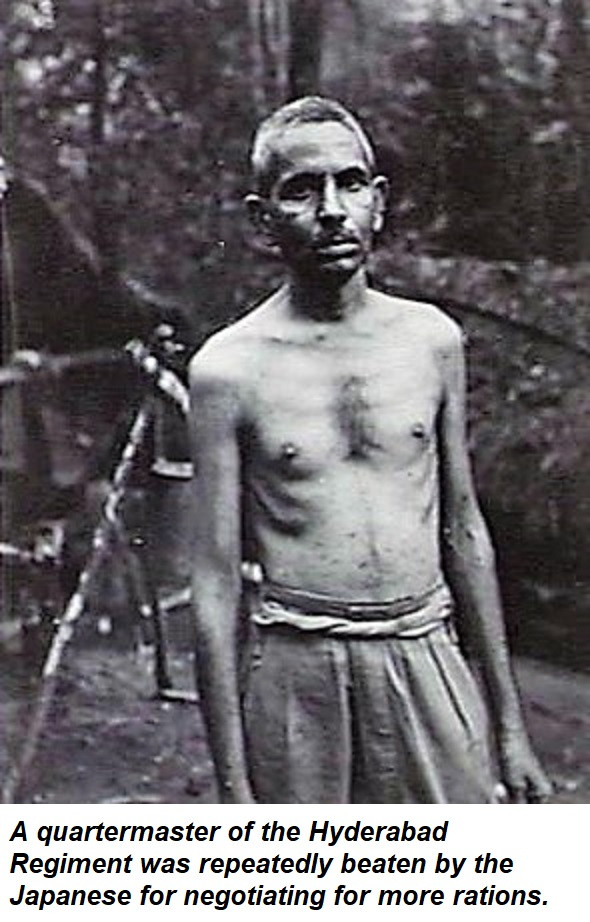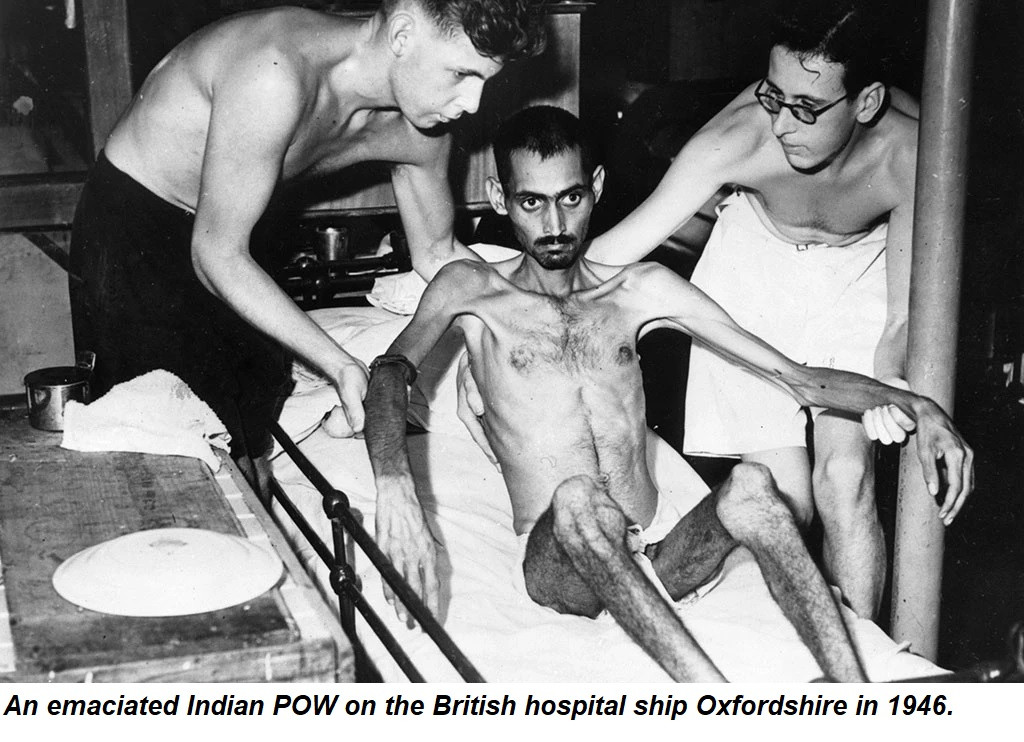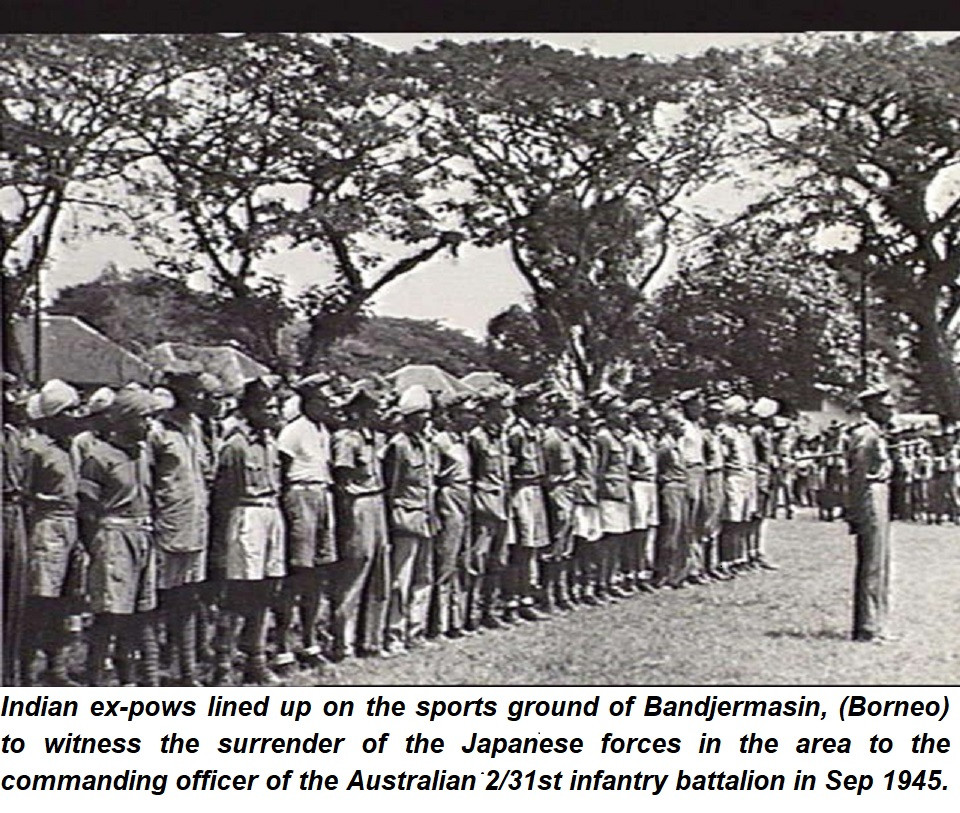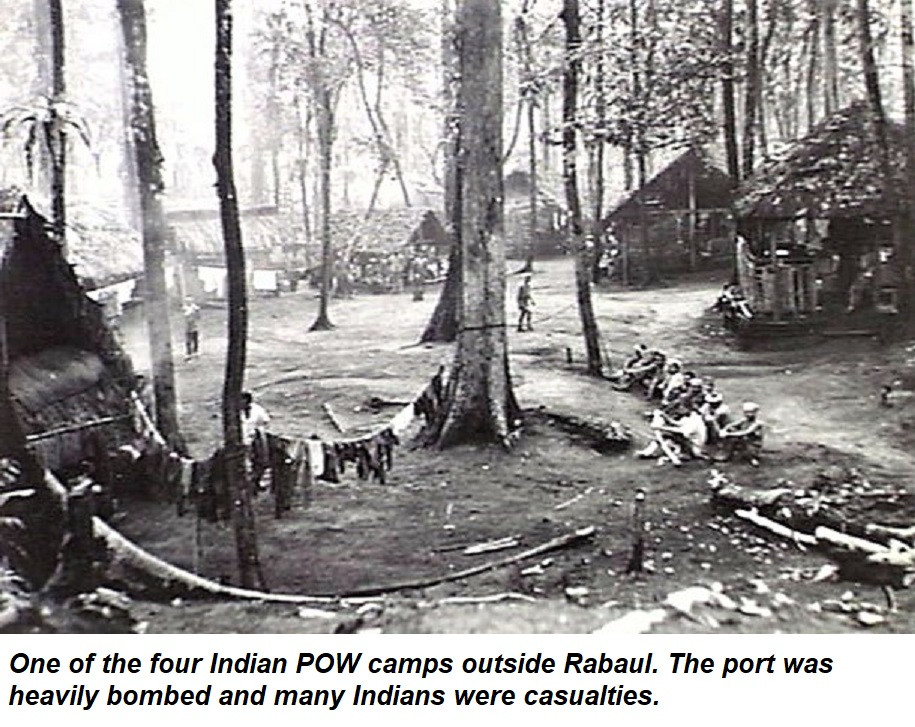The Malayan Campaign which ended with the surrender of the British Indian and Australian Army troops in February 1942 was one of the worst military defeats of the Allies by the Japanese. Nearly 50,000 Commonwealth troops were captured or killed during the Japanese advance down the Malayan peninsula and 80,000 more prisoners were taken after the fall of Singapore.
Four percent of Allied prisoners of war (POWs) in Europe died in captivity, but in the Japanese POW Camps, the death rate of white prisoners was a horrifying 27 %. Worse still was the death rate of the Indian POWs who did not join the Indian National Army (INA). These unfortunate Indians paid a heavy price for remaining loyal to their oath under the most difficult and inhuman circumstances.
Their number at the end of the Japanese campaign in Malaya varies between 50,000 and 60,000 of which approximately 40,000 joined the INA. Much has been written about the INA and the fate of those who served in its ranks, but there is little on record about the fate of those who remained loyal to their oath. Little evidence recorded after the war through eyewitness accounts and trials of the Japanese for war crimes, reveals that they were more harshly treated than others. Despite the large numbers involved, hardly any accounts from Indian POWs are known.

After capturing Singapore, the Japanese launched attacks against British Burma, Australian-administered New Guinea and Papua, and the islands of the Dutch East Indies (present-day Indonesia). Early in May 1943, the Japanese in Singapore formed “Indian Working Parties” from those who had resisted joining the INA. The largest group of 5000 (nine working parties) was sent to Rabaul in New Britain and 3,000 (six working parties) were sent to Wewak, in New Guinea. More were to follow later bringing the total to 10,000. With very few junior officers accustomed to take responsibility for large numbers of troops, the Indians suffered severely.
Their experiences as prisoners remains in their statements preserved in the Australian War Memorial’s Written Records collection, mostly compiled after their liberation. Some simply omit reference to those captured, and others dismiss three-and-a-half years of captivity in a few lines: “disease, privation, and inhuman cruelty took a heavy toll”. The history of the Frontier Force Rifles, for example, merely records that “the Sikhs and Dogras were sent to New Guinea, where most perished.” The history of the Baloch Regiment devotes just a page to the captivity endured by its 2/10 Battalion. It does, however, recognise that “The Indian Commissioned Officers, especially Captain Durrani, Lieutenant Mohammad Ismail and Abrar Hussain remained loyal all through and did much to keep all Indians loyal.” The history of the 3rd Cavalry (my father’s previous regiment), which surrendered at Singapore, has just two pages about their captivity and no mention of its soldiers.
British official history omits any mention of them and in spite of emphasising the importance of loyalty as a central idea in the Indian Army, Philip Mason’s history of the Indian Army barely mentions these loyal prisoners ― though the INA is discussed at length.

A rare first-person account is Eaten by the Japanese ― the memoir of John Crasta, a South Indian head clerk in the Indian Army Service Corps, who spent over three years in captivity. Most of the memoir is a clear and unsentimental account of slow bodily attrition caused by tremendous hard labour and starvation, being transported to the Island of New Britain off the northeast coast of New Guinea, with hundreds of fellow prisoners crammed into the hold of cargo ships. Describing the heat, suffocation and darkness, Crasta asks in his autobiography: “Could inferno be worse?” The camp was no better. Torrential rain, wet clothes and mosquitoes led to malaria and he lay shivering and helpless on the ground. “The thin cotton blanket given to me being inadequate to protect me from the cold, I waited for the sun to warm me. I would shiver like a leaf. Then, seized by fever, my body would turn as hot as fire ― I would become unconscious, then awake only to find myself perspiring. There was not a soul who could give [me] a sip of water.”
Wewak, the largest Japanese air base on the mainland of New Guinea, suffered repeated bombing attacks by the US and Royal Australian Air Forces. The POW camp in a swampy area was encircled with barbed wire or high wooden fencing. On arrival, the prisoners had to hastily erect their own huts using bamboo and grass that offered little protection. During heavy rain, the camp flooded and they slept in water. Because no effective sanitary facilities could be constructed in the waterlogged camp, they fell ill. The few Indian medical officers in the working parties had no medical equipment and were sent to the harbour to unload ships.
Tojo, the prime minister and minister of war had instructed the head of the POW Management Office to “… be firm in your dealings with the prisoners and do not let them idle for even a day. It is your mission to strive to contribute to the execution of the Great East Asian War by fully utilising prisoners’ labour and skills to increase productivity.” Overzealous Japanese officers misconstrued these instructions and forced the POWs to perform inhuman labour. Japan was a signatory to the Geneva Convention on the Treatment of Prisoners of War, but no steps were taken to implement the pledge. Even among officers, it was common to treat international law lightly and to say “Japan has not ratified the Geneva Convention.”

Consequently, like other camp commanders, Colonel Takano who was commanding the six Wewak working parties repeatedly called for the prisoners to work harder, beating men whom they thought were slow. Failure to comply with commands merited a beating, but very few guards spoke English. The Indians who had to call out their prisoner number in Japanese for the daily roll-call (Tenko) were compelled to learn the language. Escape attempts were rare because those who tried were executed in front of other prisoners and in some camps ten other prisoners were executed as a lesson for the others. During the six months that Colonel Takano was in command, about 400 out of the 3,000 Indian POWs died and about 300 became almost permanently disabled due to ulcers and tropical disease.
At Rabaul like elsewhere, the Indian POWs worked 10-12 hours per day, but on days when the Americans launched heavy bombing raids, the POWs had to work 12 to 14 hours. Towards the end of their captivity, their diet consisted of small quantities of sweet potatoes and tapioca. They stole livestock and rice, but if caught or even suspected of stealing food, they were executed. As in most Pacific War campaigns, disease and starvation claimed more Japanese lives than enemy action. Most Japanese troops never came in contact with Allied forces. The maritime interdiction campaign against Japanese supply lines, the amphibious movements to outflank and bypass defensive positions coupled with an effective blockade by Allied naval forces were so effective, that many Japanese garrisons became isolated.
 It is claimed that 97% Japanese deaths in this campaign were from non-combat causes. To some extent, this would explain the suffering of the Indian POWs.
It is claimed that 97% Japanese deaths in this campaign were from non-combat causes. To some extent, this would explain the suffering of the Indian POWs.
As a POW in Bougainville, (the largest island in the Solomon archipelago), Naik Clerk Gopal Pershad Jha, Ordnance Corps, recorded the daily scale of rice or wheat received. For the first five months, it was 400 grams per day, but within a year, it fell to 60 grams and finally the POWs were surviving on plants foraged from the jungle.
The Australians liberated over 6,300 Indian POWs with the majority from Rabaul (5,674) the most important defense base for the Japanese in the Southwest Pacific region. Australian units also recovered Indian POWs in both British and Dutch Borneo, but the remainder were mainly in the Netherlands Indies (390 in Morotai and 190 at Balikpapan) and 90 on Labuan in British Borneo. Based on an estimate of 10,000 Indian POWs transported to New Guinea and New Britain, the number of deaths was a staggering 40%.

The Australians were impressed by the martial commitment of the Indians. In May 1945, an Australian Battalion found a party of 14 Indians approaching its perimeter. Led by a havaldar, who formed his ragged and starving men into two ranks and reported to an Australian captain, “Havaldar [name] reporting with thirteen sepoys, Sir.” According to a witness, this was “a moment of great triumph” and “unforgettable” for those privileged to witness it.” A patrol rescued an emaciated Sikh from the jungle to be sent to the main base by boat after sufficient recovery. He asked to fire a few shots from a rifle. “It was touching,” the Australians recorded, “to see the way the poor chap placed his hands on the weapon once more.” He fired exactly as the musketry manual laid down and hit all of the bully beef tins set up as targets.” Similar reports by Australian soldiers in other areas suggest that the response was characteristic of liberated Indian prisoners who retained a sense of unit cohesion even after three and a half years of captivity. At Rabaul, liberated prisoners stood guard at a hut, a flagpole decorated its base with whitewashed rocks reading “1st Hyderabad” ― an Indian States Force battalion captured in Singapore. Nearby, at Kumuia Yama camp, within weeks of their liberation, prisoners formed a quarter guard, drilling with bamboo sticks.
The liberated Indian POWs were brought from temporary camps in the islands to detachments of the Indian Army Mission of the Repatriation of Allied Prisoners of War and Internees (RAPWI). Its role was to document and re-equip liberated prisoners and dispatch them to India to rehabilitate both mentally and physically to the utmost extent in the time available.” The men were issued with Australian uniforms and kit, individual cooking utensils if caste rules required them, and Australian pay books as well as varying levels of pay according to their ranks.

Why were the Japanese so cruel with the POWs? Sarah Kovner’s Prisoners of the Empire, Inside Japanese POW Camps shows that much of the cruelty was at the policy planning level, less intentional than a result of negligence, incompetence, and irresponsibility that permeated all the way down. POW camps were administered in accordance with Japanese domestic regulations for handling prisoners. The non-commissioned officers (NCOs), soldiers and civilian aides in control of the prisoners knew nothing of the Geneva Convention.
The horrid conditions, logistical difficulties, poor planning and negligence in the camps led to the high mortality rate. The Japanese were unprepared for the total collapse of the Allied forces at the initial stages of the war and the need to house tens of thousands of POWs. The permissive attitude toward corporal punishment is explained by the fact that this was prevalent in Japanese culture and their soldiers too were subjected to beatings. This, however, cannot absolve them from using Indian prisoners for target practice and bayoneting the survivors. Nor can it justify cases of cannibalism. In 1946, the Times of India carried a short item from Reuters that read, “Japanese Lieutenant Hisata Tomiyasu was found guilty of the murder of 14 Indian soldiers and of cannibalism at Wewak, New Guinea, in 1944 and has been sentenced to death by hanging.”
The writer is a retired Pakistan Army major general and a military historian. He can be contacted at syedali4955@gmail.com. All facts and information is the responsibility of the writer
